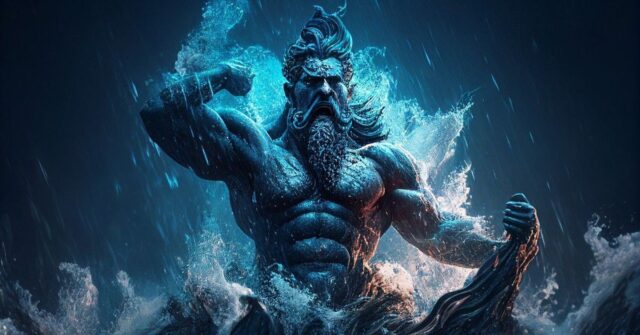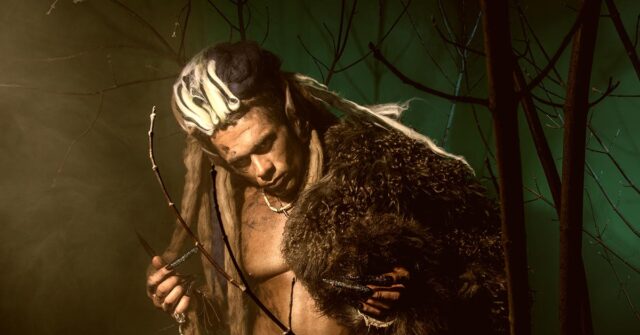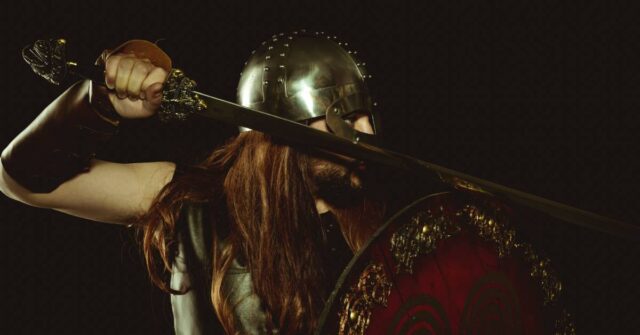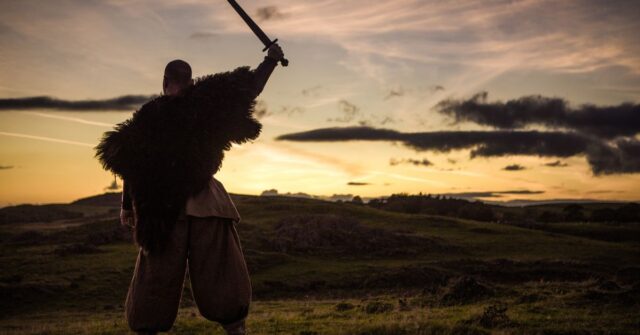Discover the fascinating tale of Ragnarok, the apocalyptic event in Norse mythology that brings about the end of the world.
Dive into the origins of Norse mythology, explore the prophecies that foretell the end, witness the epic battles, and examine the themes and symbolism that have captivated generations. Then uncover the legacy of Ragnarok in popular culture and its relevance today.
Introduction to Norse Mythology
Norse mythology refers to the rich collection of myths, legends, and beliefs from ancient Scandinavia, mainly the Norse-Germanic tribes.
These stories were passed down orally for centuries before being recorded in manuscripts such as the Poetic Edda and the Prose Edda, written during the 13th century.
Norse mythology has left an indelible mark on our modern world, from language and literature to art and popular culture.

Deities and Key Figures
The Norse pantheon is divided into two main groups: the Aesir and the Vanir.
The Aesir, led by Odin, is associated with war and wisdom, while the Vanir, including the fertility god Frey and goddess Freyja, are connected to agriculture and prosperity.
Key figures in Norse mythology also include the trickster god Loki, the heroic demigod Thor, and an array of giants, dwarves, and supernatural creatures.
The Nine Realms
Norse cosmology consists of Nine Realms, interconnected by the world tree Yggdrasil. These realms include Asgard, home of the Aesir; Vanaheim, home of the Vanir; Midgard, the world of humans; and Jotunheim, the land of giants.
The other realms are Alfheim, home of the light elves; Svartalfheim, home of the dark elves; Niflheim, the land of ice and mist; Muspelheim, the realm of fire; and Helheim, the underworld ruled by the goddess Hel.
Understanding Ragnarok
Ragnarok, also known as the Twilight of the Gods, is the cataclysmic event that leads to the end of the world in Norse mythology. The term “Ragnarok” stems from the Old Norse words “ragna,” meaning “the ruling powers” or “the gods,” and “rök,” which can be translated as “fate” or “doom.”
Prophecies and Signs
Several prophecies and signs are said to herald the coming of Ragnarok. These omens include moral decay, the increase in violence, and the weakening of the bonds between gods, humans, and the natural world.
The Fimbulwinter
The Fimbulwinter, a three-year-long winter, is one of the major signs of impending doom. This harsh winter will lead to widespread suffering, chaos, and eventually the breakdown of social order.
The Disappearance of the Sun and Moon
As Ragnarok approaches, the sun and moon will be devoured by the wolves Skoll and Hati, plunging the world into darkness and further chaos.
The World Serpent and the Wolf
The great World Serpent, Jormungandr, and the monstrous wolf, Fenrir, will break free from their bindings, signaling the beginning of the end. These creatures, along with other forces of chaos, will join forces against the gods and the world itself.
The Major Events of Ragnarok
Ragnarok marks the cataclysmic end of the world in Norse mythology, characterized by a series of significant events.
These include the Fimbulwinter, the gathering of gods and supernatural beings for a great battle, the deaths of key deities, the destruction of the cosmos, and the eventual rebirth of the world.
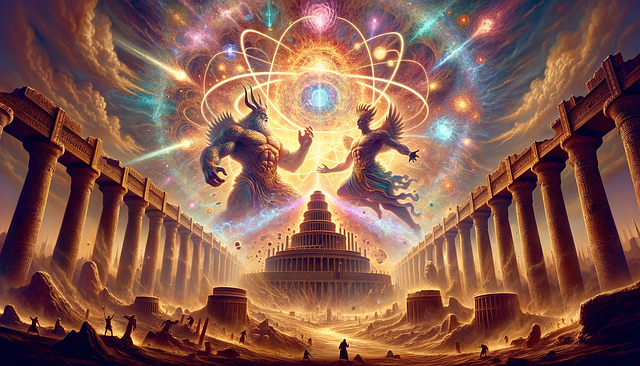
The Great Battle
The Great Battle is the climactic confrontation between the gods and the forces of chaos during Ragnarok.
This epic struggle sees the demise of many significant gods, including Odin, Thor, and Frey, as they face off against formidable adversaries like the giant wolf Fenrir, the World Serpent Jormungandr, and the fire giant Surtr.
The Gathering of the Armies
Armies of gods, giants, and other supernatural beings will assemble for the final battle of Ragnarok. The gods, led by Odin, will face off against the forces of chaos, including the giants, Loki, and his monstrous offspring, Fenrir and Jormungandr.
The Deaths of Major Gods
Many of the major gods will meet their demise during the great battle. Odin will be swallowed by Fenrir, while Thor will defeat Jormungandr but die from the serpent’s venom. Frey will fall to the fire giant Surtr, and Tyr will be slain by the monstrous hound Garm.
The Role of Loki and His Offspring
Loki and his offspring will play significant roles in the events of Ragnarok. Loki will lead the forces of chaos against the gods, while Fenrir, Jormungandr, and Hel will each contribute to the downfall of the gods and the destruction of the world.
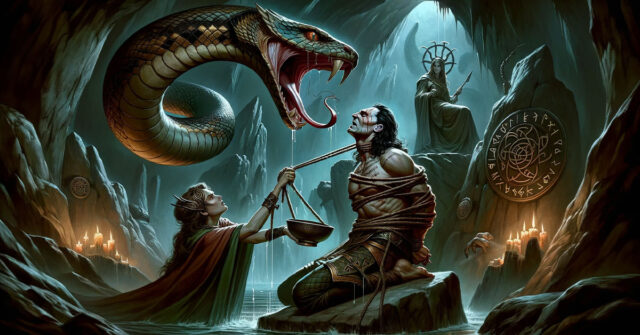
The Destruction of the Cosmos
As the great battle rages on, the cosmos itself is torn apart. The world tree Yggdrasil collapses, and the fire giant Surtr engulfs the world in flames, cleansing it of the destruction and corruption that have taken hold during Ragnarok.
The Sinking of the World Tree
As the great battle rages, the world tree Yggdrasil will begin to shake and ultimately collapse, signaling the collapse of the cosmos and the end of the Nine Realms.
The Engulfing Flames
Finally, the fire giant Surtr will set the world ablaze with his fiery sword, engulfing everything in flames and cleansing the world of its destruction and corruption.
The Aftermath of Ragnarok
In the aftermath of Ragnarok, the surviving gods and humans must come to terms with the destruction of the old world and the loss of their loved ones. The old world order has been shattered, and a new beginning awaits those who have endured the cataclysm.
The New World
From the ashes of the old world, a new Earth emerges, green and fertile. The surviving gods and humans gather in this renewed world, forging a peaceful existence and beginning the cycle of creation anew. This new world symbolizes regeneration, renewal, and the resilience of life.
The Surviving Gods and Humanity
Despite the widespread destruction, a few gods will survive Ragnarok, including Odin’s sons Vidar and Vali, and Thor’s sons Modi and Magni. A human couple, Lif and Lifthrasir, will also endure by hiding in the world tree Yggdrasil, ensuring the continuation of humanity.
The Emergence of a New Earth
From the ashes of the old world, a new Earth will emerge, green and fertile. The surviving gods and humans will gather in the renewed world, forging a new, peaceful existence and beginning the cycle of creation once more.
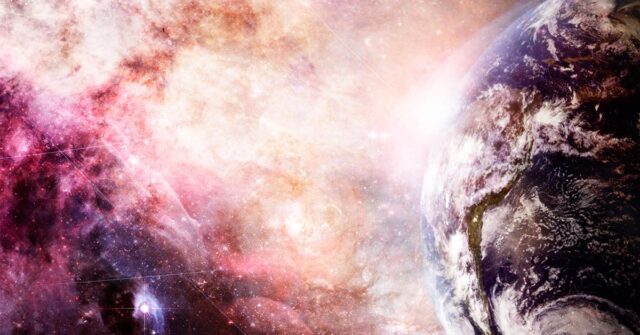
The Cycle of Creation and Destruction
Ragnarok symbolizes the cyclical nature of the universe, with creation and destruction occurring in an endless loop. This concept is reflected in many mythologies and philosophies around the world, emphasizing the resilience of life and the inevitability of change.
Themes and Symbolism in Ragnarok
Ragnarok is rich in themes and symbolism, exploring concepts such as the struggle between order and chaos, the inevitability of fate, and the cyclical nature of creation and destruction.
These themes resonate with the human experience and continue to captivate audiences in modern times.
The Struggle Between Order and Chaos
One of the central themes in Ragnarok is the struggle between order and chaos, represented by the gods and the forces of destruction. This conflict mirrors the human experience, where order and chaos constantly vie for dominance in our lives and societies.
The Inevitability of Fate
Ragnarok also explores the concept of fate and its inescapable nature. Despite their power and knowledge, the gods cannot prevent their prophesied downfall, highlighting the inexorable march of destiny.
Regeneration and Renewal
Another critical theme in Ragnarok is the concept of regeneration and renewal. After the destruction of the old world, a new world emerges, symbolizing the resilience of life and the opportunity for growth and rebirth.
This theme is particularly relevant in times of personal or societal upheaval, reminding us that change can bring about new beginnings.
The Legacy of Ragnarok in Popular Culture
The legacy of Ragnarok and Norse mythology can be seen in various forms of popular culture, from literature and film to music and art.
These modern interpretations and adaptations often explore the themes and symbolism present in the original myths while presenting them in new and engaging ways, ensuring the enduring appeal of these ancient tales.
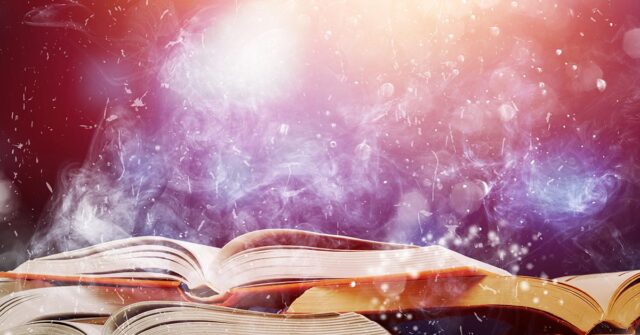
Modern Interpretations and Adaptations
Ragnarok and Norse mythology have captured the imaginations of countless artists and creators, inspiring various modern interpretations and adaptations. These retellings often explore the themes and symbolism present in the original myths while presenting them in new and engaging ways.
Literature
Many authors have drawn inspiration from Ragnarok and Norse mythology, incorporating elements of these stories into their own works. Notable examples include J.R.R. Tolkien’s Middle-earth Legendarium, Neil Gaiman’s “American Gods,” and Rick Riordan’s “Magnus Chase and the Gods of Asgard” series.
Film and Television
Ragnarok has also found its way onto the big and small screen, with popular adaptations such as Marvel’s “Thor: Ragnarok” and the Netflix series “Ragnarok,” which reinterprets Norse mythology in a modern, high school setting.
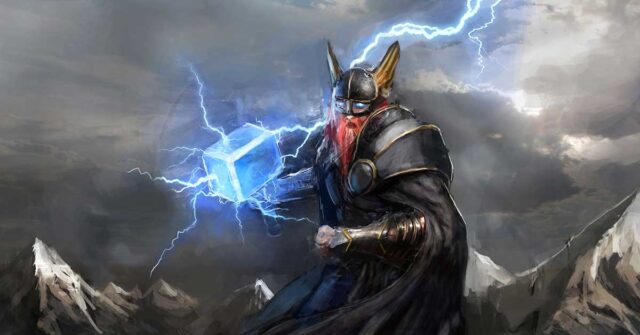
Music and Art
The themes and imagery of Ragnarok have long captivated musicians and visual artists, resulting in a wealth of artistic creations that draw upon the myth’s rich tapestry. Examples include the paintings of romantic artist Johann Heinrich Füssli and the music of composer Richard Wagner, whose epic opera cycle “Der Ring des Nibelungen” is heavily influenced by Norse mythology.
Conclusion
Ragnarok continues to captivate the hearts and minds of people across the globe, with its timeless themes of struggle, fate, and renewal resonating deeply in our collective consciousness.
As we continue to face our own battles, both personal and societal, the story of Ragnarok serves as a powerful reminder of the cyclical nature of existence and the potential for renewal in the face of destruction.
The Relevance of Norse Mythology Today
The enduring popularity of Norse mythology and its tales of gods, heroes, and cosmic struggle speaks to the universality of the human experience. As we continue to explore our own world and its mysteries, these ancient stories remain an important part of our cultural heritage, offering wisdom, inspiration, and a shared connection to the past.








